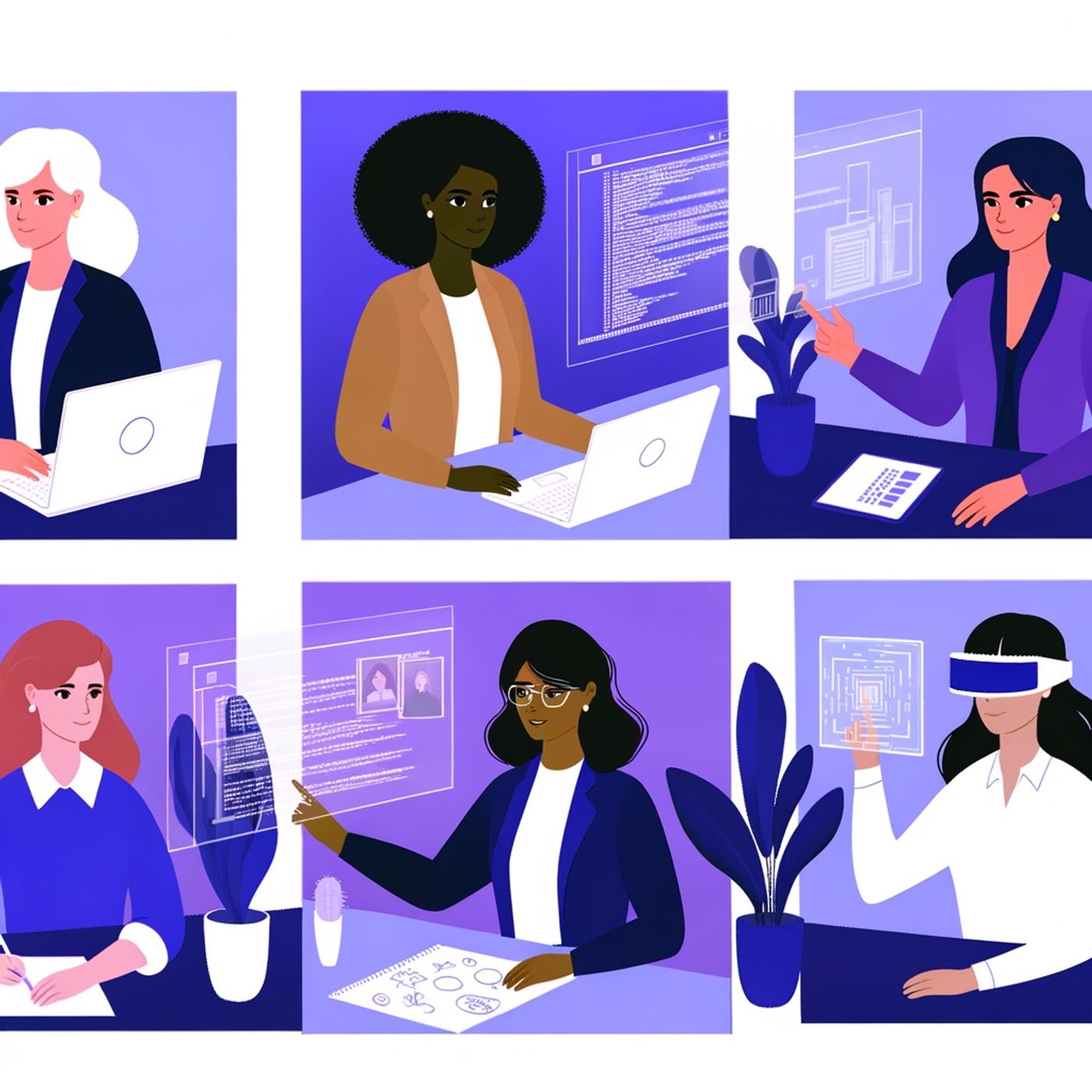Podcast Episode Details
Back to Podcast Episodes
Cracking the Code: Women Navigating Tech in 2025
This is your Women in Business podcast.
Welcome back to Women in Business. Today, we’re diving into what it really means to be a woman navigating the tech industry in 2025—a world where opportunity and challenge coexist like never before.
Let’s start with the numbers. Even though women make up nearly half of the U.S. workforce, only about 27% to 35% of tech jobs are held by women, according to recent reports by the National Science Foundation and organizations like WomenTech Network. Now, while that’s a marked improvement from just 9% in the early 2000s, the gender gap, especially in leadership and core technical roles, remains stark. At tech giants like Microsoft and Google, women account for less than a third of the staff, and an even smaller fraction hold executive positions. This disparity isn’t just a diversity statistic—it’s a missed opportunity for the industry, with organizations like McKinsey & Company pointing out that more gender-diverse teams drive innovation and business success.
Why does this gap persist in 2025? First, there’s the stubborn issue of access. STEM education still sees women underrepresented, particularly in fields like computer science, where only about 21% of Bachelor’s degrees go to women. This sets the stage for fewer women entering high-demand tech roles and even fewer in specialties like AI, data science, and cybersecurity.
Second, once inside the industry, women face barriers that include gender bias, pay inequity, and a lack of mentorship. According to the WomenTech Network's recent Barriers to Leadership report, 72% of women reported experiencing gender bias affecting their promotion opportunities, and 58% said they lacked equal access to networking. These aren’t abstract problems—these are realities that shape careers every single day.
But here’s where we pivot to progress—and possibility. Support for diversity and inclusion is growing. DEI initiatives, proactive mentorship programs, and pay equity audits are helping more women advance. Also, the expansion of remote work since the pandemic has given many women renewed flexibility, allowing for better work-life balance, even if burnout is still a risk.
Let’s talk geography. The opportunities for women in tech also depend greatly on location. Cities like San Jose remain leaders in competitive salaries, but Columbia, South Carolina, and Little Rock, Arkansas, are emerging as top places for women to launch or grow their tech careers, based on data from CoworkingCafe's Women in Tech series. These cities showcase faster wage growth and higher female representation, signaling a shift beyond traditional tech hubs.
What about retention? Here’s the reality check: half of all women who enter tech will leave by age 35. That’s a wake-up call. Retaining women in tech means addressing everyday experiences—ensuring transparency in promotions, fostering real mentorship, and celebrating women’s technical achievements rather than sidelining them.
As we discuss these issues, here are five key points for today’s conversation. First, understanding the persistent gaps in representation and leadership. Second, the crucial role of education and early mentorship. Third, the changing landscape of geographic opportunity. Fourth, the impact of workplace culture, pay equity, and flexible work options. And fifth, real strategies companies and allies can use to retain and elevate women in tech.
Listeners, if you’ve faced these hurdles or are shaping your path in tech, know this: Every statistic represents someone’s story—but your journey is uniquely yours and can help pave the way for others.
Thanks for tuning in to Women in Business. Be sure to subscribe so you don’t miss our next conversation on rising women leaders in emerging technologies. This has been a quiet please production, for more check out quiet please dot ai.
For more
Published on 1 week, 6 days ago